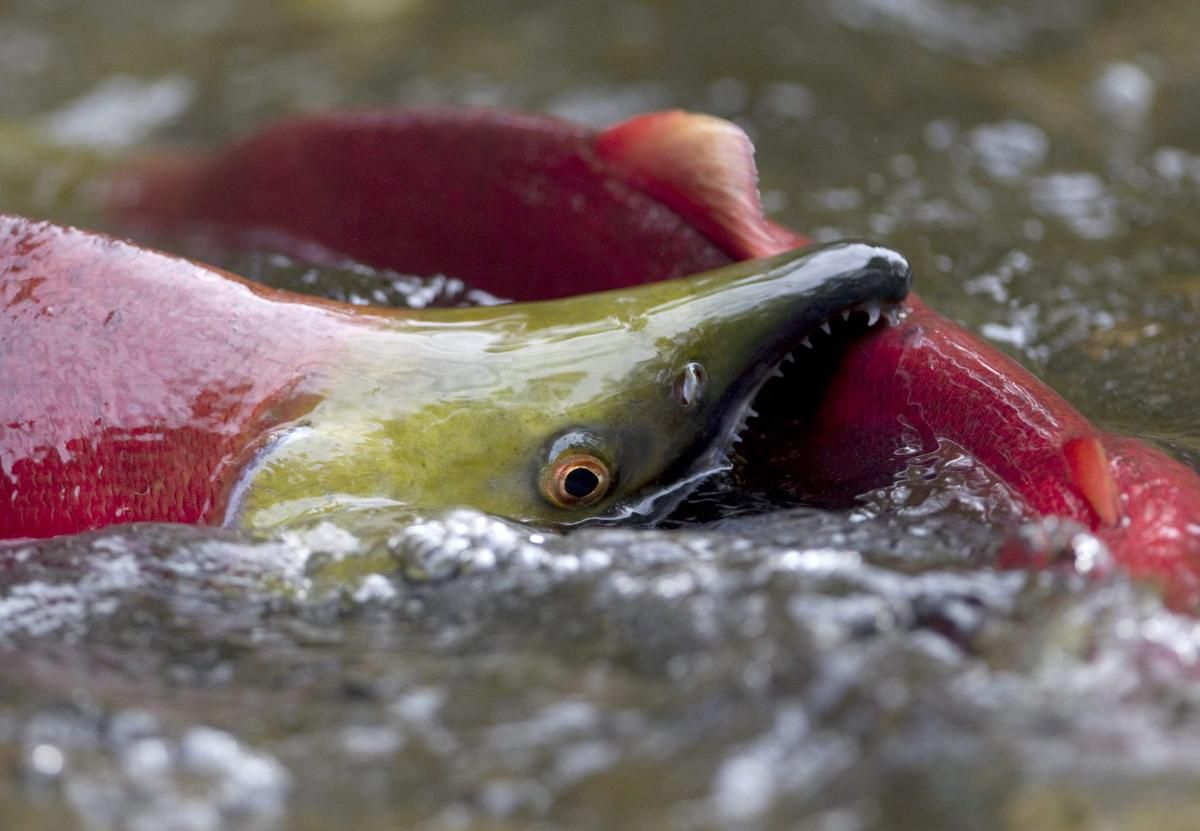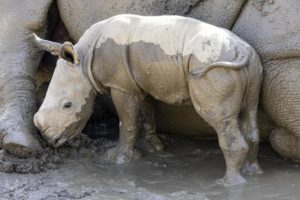Land-based fish farms, alternative seafood menus, and other ways British Columbia is trying to save Chinooks and sockeyes.
In British Columbia, salmon is ubiquitous on restaurant menus as well as at souvenir shops. But now, chefs and conservationists are saying that to save the region’s endangered signature fish, people need to put a pause on their salmon consumption.
“About half of Pacific salmon populations are in some state of decline,” says Michael Meneer of the Pacific Salmon Foundation (PSF), a non-profit dedicated to conserving the fish. Some are classified as endangered or threatened. Globally, the 2020 Pacific salmon catch was the lowest since 1982.
Keeping the Pacific salmon population healthy and robust also supports other wildlife, including bears and whales, as well as plants. Here’s what Canadian restaurants and conservation groups are doing—and how travelers can help.
THREATS TO SALMON
At any given time, five different species of salmon swim in the waters off of British Columbia, Canada’s westernmost province. That includes the smaller, more plentiful pinks and the largest, most-at-risk Chinooks. The fish hatch in freshwater streams and rivers—often deep in the province’s mountainous interior—then swim out to the Pacific Ocean where they gain 99 percent of their adult weight. They then return to the streams where they were hatched to spawn and die, beginning the cycle anew. But it’s getting harder and harder for salmon to complete that cycle.
The threats against salmon and their habitats are myriad and getting worse—climate change, pollution, pathogens from open-net fish farms, overfishing, plus human infrastructure along spawning grounds. Pacific salmon stocks are in long-term decline with many runs on the verge of collapse. “We need to do everything we can in favor of wild salmon,” says PSF’s Jason Hwang. That means fighting climate change, restoring habitats, and carefully managing weak salmon populations.
(Discover how a remote Alaskan salmon-fishing region survived COVID-19.)
The collapse of salmon affects Indigenous cultures and all the humans, plants, and animals that directly or indirectly rely on the fish. Salmon is also a keystone species supporting “more than 130 different species of flora and fauna in British Columbia,” says Meneer.
Ecologist Megan Adams researches the symbiotic relationship salmon has with plants and animals. She says bears need the nutrients from salmon to be healthy and reproduce. Forests, in turn, eventually absorb the nutrients from scraps the bears leave behind. “Salmon are incredibly generous,” says Adams. After traveling thousands of miles in the open ocean, “they return home to freshwater environments to spawn, bringing with them all the marine nutrients they built up throughout their life cycle.”
Endangered orca also depend on a salmon diet. There are only 74 southern resident killer whales and about 300 northern resident killer whales in the waters around B.C., Alaska, and Washington state. Favorites of whale watchers, each one eats about 55 pounds of Chinook daily. But Chinook is now so scarce that the whales must spend more time in the open ocean hunting it, meaning scientists and whale watchers rarely see them anymore. Somewhat easier to spot: the 400 transient killer whales that also live off the Pacific coast, eating mammals like seals that feed on salmon and other fish.
Salmon has always been essential to Indigenous peoples along the Pacific Coast of what’s now known as the United States and Canada. It’s used for food, social, and ceremonial purposes. The fish symbolize not taking more than you need, and traditional ancestral Indigenous fishing methods are inherently sustainable. For some Indigenous peoples, ceremonies returning salmon bones to the water are an important spiritual connection to their histories and cultures. Canada’s First Nations are still fighting to regain fishing rights they lost when Europeans colonized the land centuries ago.
SHOULD YOU EAT SALMON?
Although ordering farmed salmon instead of wild sounds like a conservation-minded solution, it probably isn’t. “Open-net salmon farms pose a real risk to wild Pacific salmon,” says Andrew Bateman of PSF. Parasites and viruses can transfer from open-net farms to wild fish. This limits wild salmon’s growth and ability to evade predators and therefore survive, reproduce, and, eventually, feed the forest. Canada is now phasing out ocean fish farms, most recently in the Discovery Islands near Vancouver, a key orca habitat.
There’s growing awareness about the negatives of open-net fish farms. Canada closed 60 percent of its commercial Pacific salmon fisheries this summer and is buying back harvesting licenses to permanently decrease the amount of wild fishing allowed.
More restaurants are cooking with sustainable fishes like B.C. lingcod or sablefish. In popular tourist areas including Vancouver, Victoria, Tofino, and the Okanagan region, hundreds of chefs label their seafood menus with the Ocean Wise symbol.
While Ocean Wise doesn’t offer a conservation certification, the program does recommend seafood that is more resilient to fishing pressures and harvested in ways to limit habitat damage and bycatch. Its 275-page seafood list takes into account not just the specific fish species but how, when, and where it is caught.
Some chefs and hotels are going further, taking salmon off their menus entirely. In British Columbia’s remote Great Bear Rainforest, Nimmo Bay Wilderness Resort stopped serving salmon in 2020. Now chef Linnéa LeTourneau crafts dishes using local, sustainable seafood like albacore tuna and spot prawns. So far, she says the reaction of guests—and local First Nations neighbors—is positive: “It’s seen as a good start in helping educate people on why we need to restore river systems,” she says.
FISH FOR THE FUTURE
Land-based fish farms might help, too. B.C.’s first such salmon operation, Kuterra on northeastern Vancouver Island, grows fish in tanks fed by continuously circulated well water that’s disinfected via UV light. Its salmon is on the menus of a few upscale B.C. restaurants.
However, the profitability of land-based farms isn’t guaranteed. Conservation biologist Brett Favaro warns that they’re “more energy-intensive and use a lot of water, so you have to be mindful.”
“Fishing can be horribly damaging,” says Favaro, but “it can also be a truly sustainable endeavor.” This means it’s still okay to come to Canada and catch your own dinner. You can help protect salmon by hiring a local guide, skipping the Chinook, and adding the PSF’s $6 (Canadian) Salmon Conservation Stamp to your fishing license. It allows you to eat your catch and all funds go to grassroots and Indigenous salmon conservation projects. The best guides are experts on fish migratory patterns, the health of their local runs, and all the sustainability regulations you must follow.
By making careful choices, you can help make sure salmon continues to feed the region’s bears and whales, and, in time, comes back to dinner plates. “Salmon have proven time and again that they can bounce back if the conditions are right,” says Favaro. “If we take care of salmon, they will take care of us.”
Johanna Read is a Vancouver-based journalist focused on responsible tourism. Follow her on Twitter and Instagram.
_




